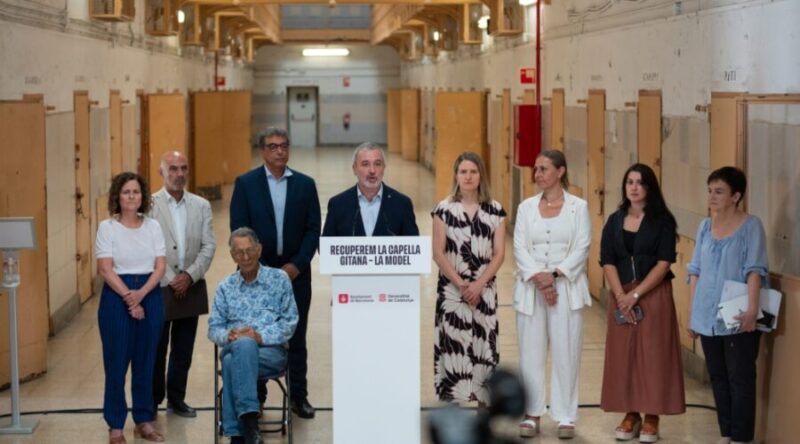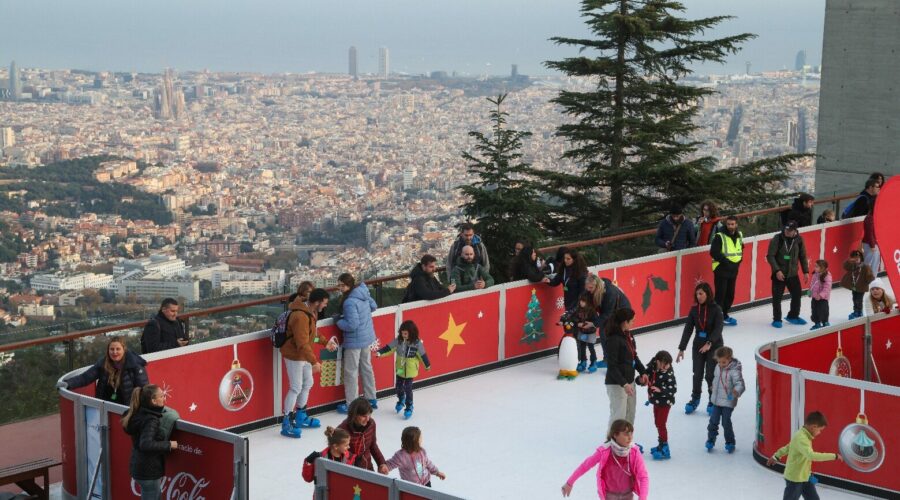The historic *Barcelona Model Prison* has made headlines again recently. This time, not because of its shady past, but because of a fascinating discovery that has caught the attention of artists, historians and the curious alike: the wall paintings in the gypsy chapel.
An unexpected finding
Discovering the mural paintings in the chapel has been an adventure in itself. After years of neglect, this chapel went unnoticed within the magnitude of the prison. However, the restoration of this space was deemed necessary to recognize and preserve its historical value. Often, the most valuable surprises are hidden in plain sight.
During the discovery phase, a series of colorful murals were revealed. Each image depicted on the wall transports viewers to a time and culture that has often been marginalized. In these works, themes of traditional religious art are intertwined with elements characteristic of gypsy culture. This unexpected encounter between cultures in such an unusual space is sure to capture the imagination of those lucky enough to see it.
The intervention and the restoration process
The restoration of the chapel was not a simple process. A specialized team was needed to treat the walls with care. Each fragment of paint was vulnerable and required delicate treatment so as not to lose part of its original essence. The restoration work involved not only the expert hands of professionals, but also attentive eyes that knew how to identify which sections of the paintings needed immediate attention.
Revitalizing these works is more than an artistic initiative. It is a statement about the importance of recognizing and honoring the cultural legacy of communities that, like the Gypsies, are often left out of official narratives. By preserving their artistic manifestations, we are also preserving part of their history and identity.
The incursion into the cultural heritage
Such discoveries raise the question of how an artistic work can be recognized as part of a common legacy. In the case of the gypsy chapel, its location in an iconic prison reflects how art can flourish in some of the most unexpected places. The paintings are not simply religious images. They are living testimonies to the resilient quality of a community that has come through difficult times.
Giving visibility to these works also means opening the door to discussions about cultural inclusion. How does one decide what deserves to be preserved as part of cultural heritage? In this case, the intervention on the wall paintings serves as a reminder that art can be a bridge between different backgrounds, thus bringing the community as a whole closer together.
A promising future for the Model
The discovery of these paintings in the Model de Barcelona is just one more chapter in a space that has served over time as the setting for powerful and moving stories. Although there is still a long way to go to fully restore and preserve this artistic heritage, the process already represents an important victory for the visibility of minority cultures and a step forward in the construction of a more inclusive narrative.
This emblematic finding is also an invitation to reflect on the role of art in our lives and societies. It reminds us of the ability of artistic creations to stand the test of time and keep alive the memory of those who may not always have found a space in official history. Now, with the city’s support, this special corner could become a symbol of diversity, resistance and the power of art to tell forgotten stories.
In conclusion, the restoration and visibility of the mural paintings of the gypsy chapel in the Modelo prison not only enriches Barcelona’s heritage but also offers a window into the past, reminding us of the importance of recognizing and preserving all the voices that are part of our rich cultural history.




